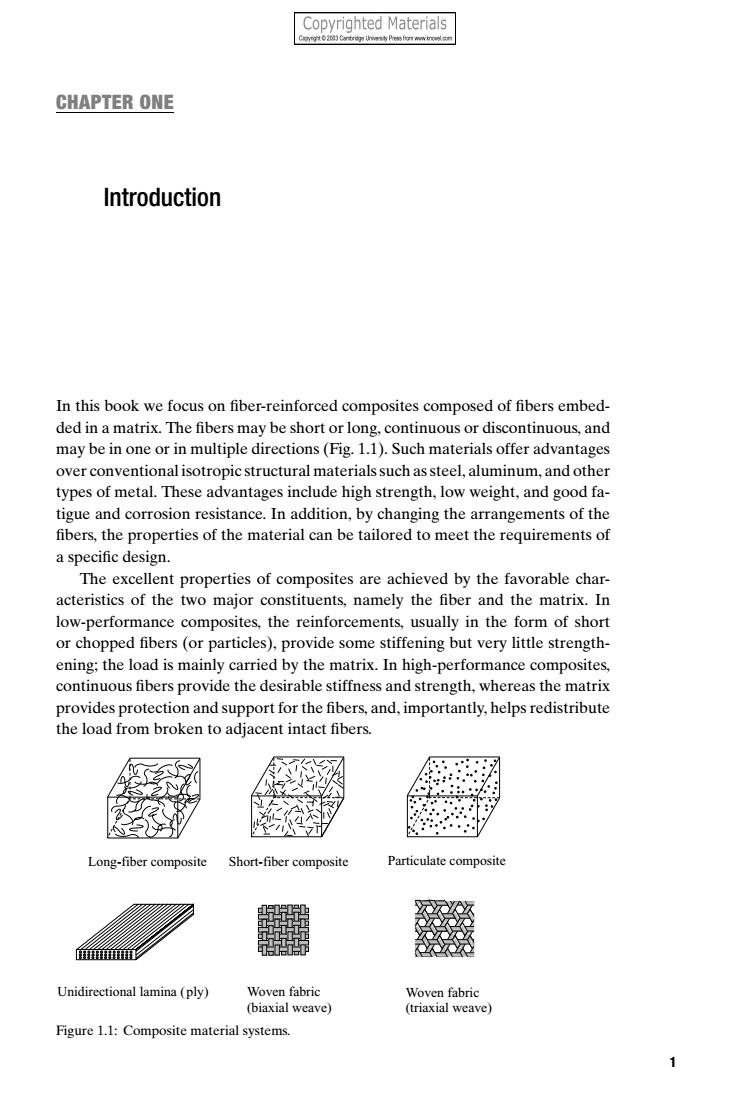正在加载图片...

Copyrighted Materials 0CrU Press forwm CHAPTER ONE Introduction In this book we focus on fiber-reinforced composites composed of fibers embed- ded in a matrix.The fibers may be short or long,continuous or discontinuous,and may be in one or in multiple directions(Fig.1.1).Such materials offer advantages over conventional isotropic structural materials such as steel,aluminum,and other types of metal.These advantages include high strength,low weight,and good fa- tigue and corrosion resistance.In addition,by changing the arrangements of the fibers,the properties of the material can be tailored to meet the requirements of a specific design. The excellent properties of composites are achieved by the favorable char- acteristics of the two major constituents,namely the fiber and the matrix.In low-performance composites,the reinforcements,usually in the form of short or chopped fibers(or particles),provide some stiffening but very little strength- ening;the load is mainly carried by the matrix.In high-performance composites, continuous fibers provide the desirable stiffness and strength,whereas the matrix provides protection and support for the fibers,and,importantly,helps redistribute the load from broken to adjacent intact fibers. Long-fiber composite Short-fiber composite Particulate composite i Unidirectional lamina(ply) Woven fabric Woven fabric (biaxial weave) (triaxial weave) Figure 1.1:Composite material systems.CHAPTER ONE Introduction In this book we focus on fiber-reinforced composites composed of fibers embedded in a matrix. The fibers may be short or long, continuous or discontinuous, and may be in one or in multiple directions (Fig. 1.1). Such materials offer advantages over conventional isotropic structural materials such as steel, aluminum, and other types of metal. These advantages include high strength, low weight, and good fatigue and corrosion resistance. In addition, by changing the arrangements of the fibers, the properties of the material can be tailored to meet the requirements of a specific design. The excellent properties of composites are achieved by the favorable characteristics of the two major constituents, namely the fiber and the matrix. In low-performance composites, the reinforcements, usually in the form of short or chopped fibers (or particles), provide some stiffening but very little strengthening; the load is mainly carried by the matrix. In high-performance composites, continuous fibers provide the desirable stiffness and strength, whereas the matrix provides protection and support for the fibers, and, importantly, helps redistribute the load from broken to adjacent intact fibers. Long-fiber composite Short-fiber composite Particulate composite Unidirectional lamina (ply) Woven fabric (biaxial weave) Woven fabric (triaxial weave) Figure 1.1: Composite material systems. 1